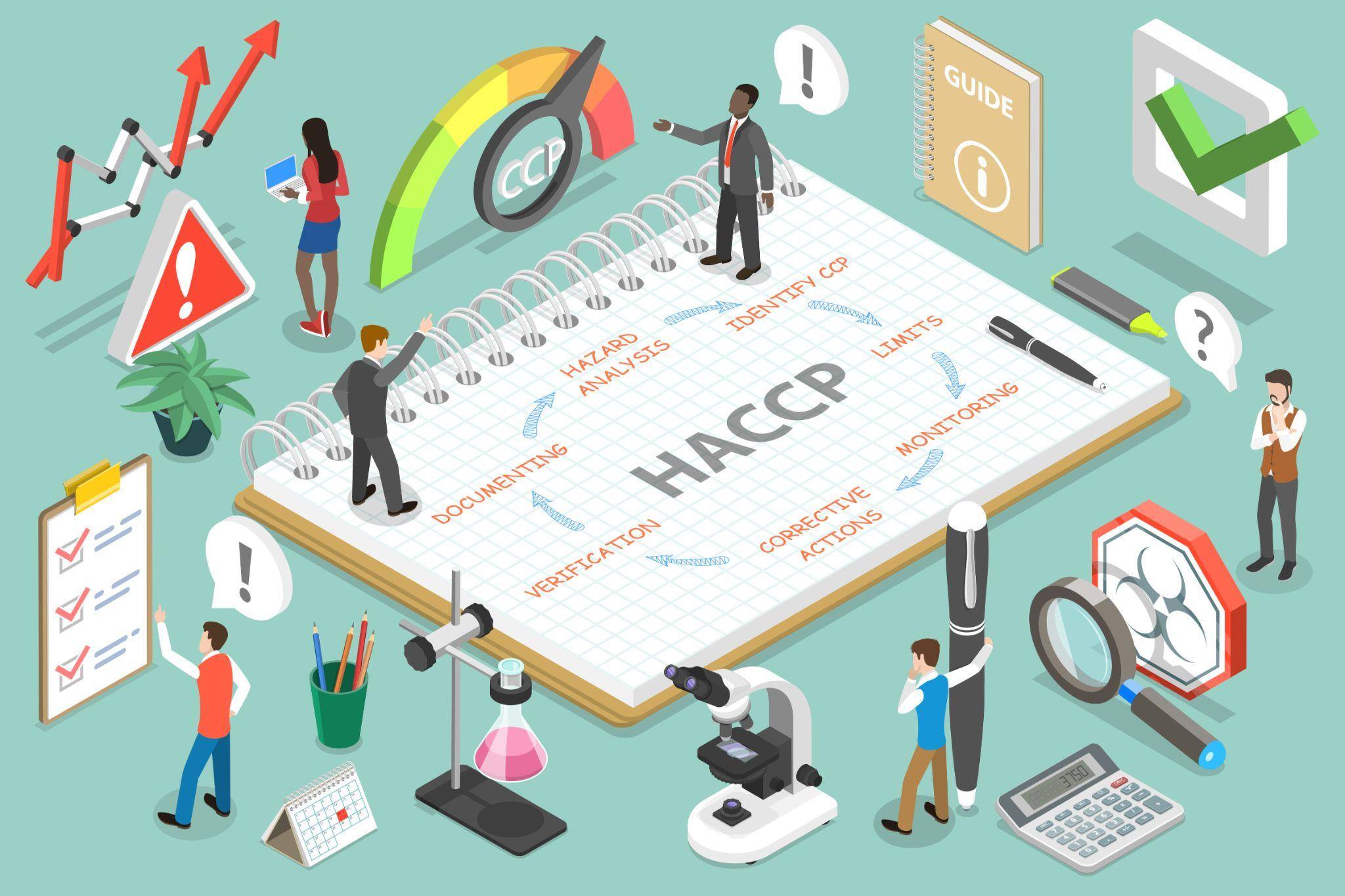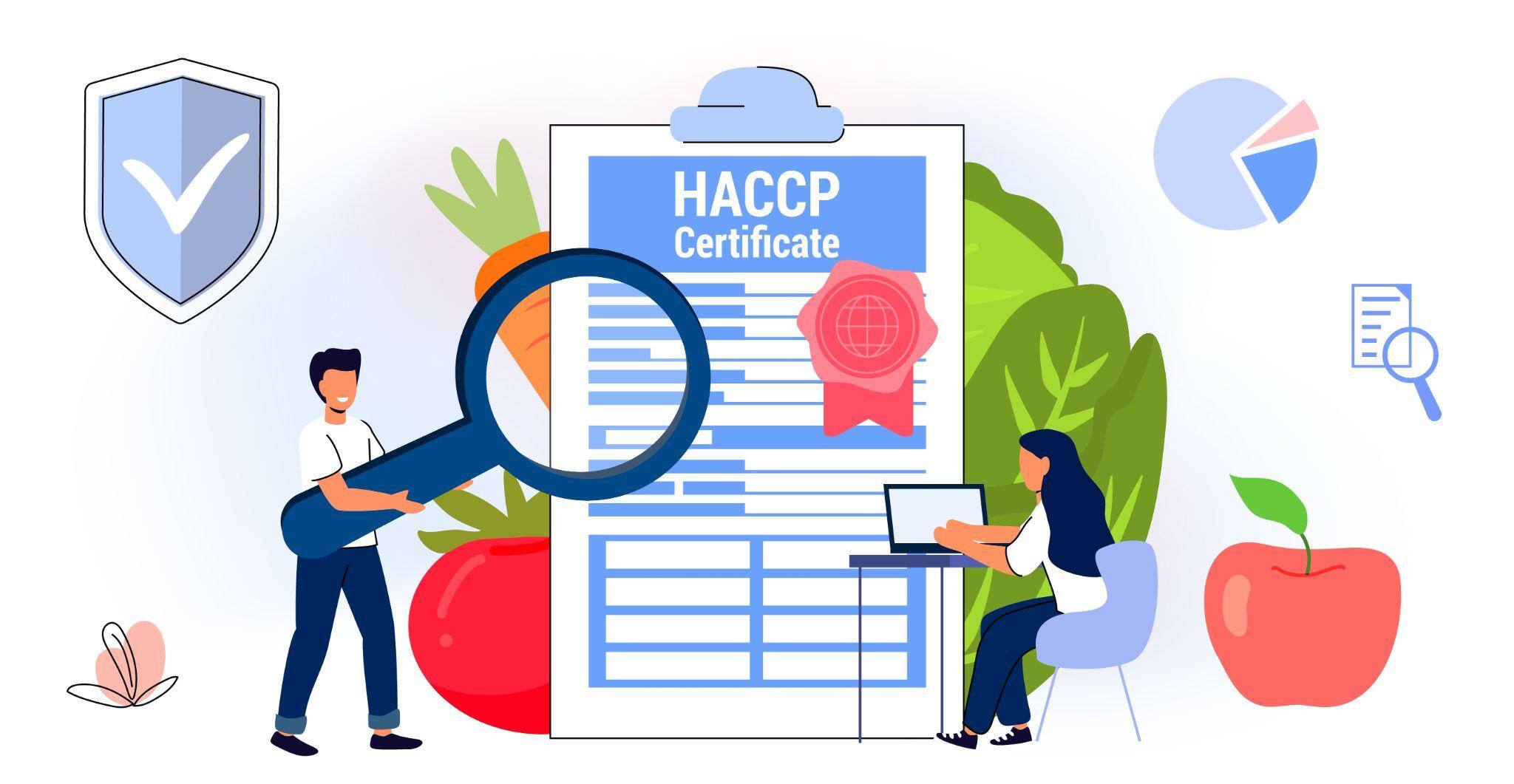
Navigating food safety requirements can be challenging, especially when faced with terms like “HACCP compliant” and “HACCP certified.” Understanding these distinctions is essential for any business in the foodservice or food production industries aiming to maintain the highest safety standards.
Below, we’ll examine the differences between being HACCP compliant—adhering to necessary safety protocols—and achieving HACCP certification, a recognized mark of safety excellence. We’ll explore what HACCP entails, the steps to compliance, and the benefits of full certification, helping you make informed decisions to safeguard your business and your customers.
What Is HACCP?

HACCP, or Hazard Analysis Critical Control Point, is the universally recognized food safety management system used in the foodservice and food production industries. HACCP principles compel businesses to improve and maintain their food safety procedures for all aspects of food preparation.
The goal of the HACCP protocol is to ensure a measured approach to food safety in all aspects of the business including biological, chemical, and physical hazards. This comprehensive method involves identifying potential food safety hazards early in the production process and implementing critical control points where these risks can be effectively managed or eliminated. Using the HACCP approach ensures a safe final product that is constantly HACCP compliant. It also protects consumers and bolsters credibility and trustworthiness.
What Is HACCP Compliance?
HACCP compliance refers to the proper execution of all aspects of food storage and handling; all of these aspects must be conducted in a safe manner with the appropriate corrective actions fully enforced and recorded for traceability.
This entails a thorough adherence to established protocols that are designed to prevent, eliminate, or reduce food safety hazards to acceptable levels. Ensuring compliance requires regular audits and reviews of food safety practices, as well as consistent documentation of these activities.
This detailed record-keeping is vital for providing evidence of compliance during inspections and for verifying that all safety measures are both effective and adhered to.
What Is HACCP Certification?

HACCP food safety certification is achieved once a business has completed the required training as well as the HACCP certification process.
A HACCP certificate is granted by an independent third-party certification authority, affirming that the business meets rigorous food safety management standards. The certification acts as an official endorsement of the business’s systematic approach to identifying, evaluating, and controlling food safety hazards. A HACCP certificate is not just a paper certificate—it’s an affirmation of a business’s ongoing commitment to uphold and exceed the standard practices in food safety.
Key Differences Between HACCP Compliance and Certification
HACCP compliance refers to a business’s adherence to the basic principles and practices outlined by HACCP to manage food safety risks, including the implementation of systems to identify and control biological, chemical, and physical hazards throughout the food production process.
HACCP certification, on the other hand, is awarded by an accredited third-party body and goes a step further by providing official recognition that a business’s adherence to HACCP principles has been rigorously evaluated and audited. This certification ensures that the HACCP system is not only integrated into the food safety management efforts but is also continually followed and improved upon.
While compliance demonstrates adherence to safety practices, certification provides external verification by a reputable authority and may be required by law or trade partners, enhancing business credibility and public trust.
How to Become HACCP Compliant
Before a business can become HACCP certified, they must first ensure HACCP compliance. The United States Food and Drug Administration (FDA) has developed a set of HACCP principles and application guidelines to use.
The FDA’s HACCP principles are broken down into seven basic concepts and steps, as follows:
1. Conduct a Hazard Analysis
Identify potential biological, chemical, and physical risks associated with food handling, storage, and preparation.
2. Determine Critical Control Points
Identify what steps in the process that are necessary to prevent or eliminate food safety hazards and apply control measures to prevent the risks previously identified.
3. Establish Critical Limits
Set minimum and maximum control limits, such as the safe temperatures for food storage, or minimum and maximum cooking temperatures for different types of foods, and other operational parameters like pH and chlorine levels.
4. Establish Monitoring Procedures
Establish monitoring processes to enforce the previous three steps. This could be recording temperatures of walk-ins and other food storage areas on an hourly basis, observing how your employees handle food, and ensuring the process stays within critical limits.
5. Establish Corrective Actions
Whenever monitoring procedures encounter an issue or problem, have corrective action plans in place and execute them as needed.
For instance, if food in a cooler exceeds the maximum temperature established at a critical control point, discard the food as waste, and then investigate and resolve the cause of the non-compliance.
6. Establish Verification Procedures
Once the HACCP plan, principles, and applications are being used on a daily basis, review the procedures and ensure they have addressed all critical control points and other potential hazards identified. Include additional testing or validation to confirm that the HACCP system is working effectively.
7. Establish Record-Keeping and Documentation Procedures
Create record-keeping and documentation procedures to show the recording and collecting of the temperature data, monitoring food handling processes, and actions taken to correct potential problems. Each of these records should provide a history that demonstrates the effectiveness of the HACCP system.
How to Get a HACCP Certification

To obtain HACCP certification, a business must first ensure it is fully compliant with HACCP guidelines.
Once compliance is established, the next step is to select a reputable third-party certification service. It’s important to choose a certifier that is recognized and accredited to perform HACCP certifications, as this ensures the certification will be widely accepted and respected. The chosen certification body will conduct a thorough audit of the HACCP system, including a review of all documentation, practices, and adherence to critical limits at control points.
If the business meets all the required standards, the certifier will issue a HACCP certificate, affirming the business’s commitment to food safety and quality management.
The Path to HACCP Compliance Starts With ComplianceMate
The most effective way to build and maintain HACCP compliance and set the path to earning a HACCP certification is to have a food safety management system in place.
ComplianceMate provides a HACCP compliant solution to optimize your food safety temperature monitoring as well as automated workflow processes. ComplianceMate’s IoT monitoring systems makes monitoring effortless and helps automate and streamline workflows which ultimately protect your guests and your brand.
Request a customized ComplianceMate demo of the HACCP compliance tools available today.


